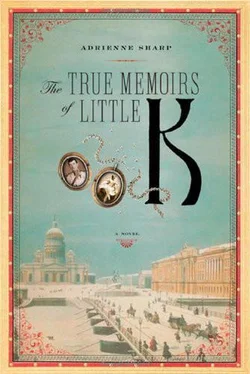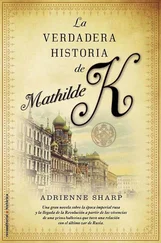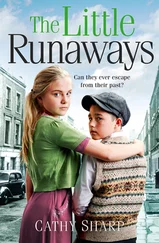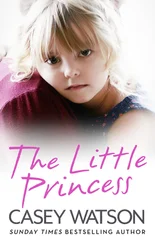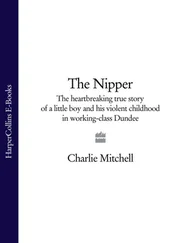I’ve outlived her, you know.
Well, I was invited, very reluctantly, by Fokine to dance in Paris not in Giselle or Les Sylphides or Prince Igor , but in only one forgettable ballet, his Le Pavilon d’Armide , three acts set during the time of Louis XIV with a libretto of counts, roses, fiancées, slaves, dreams, gardens, weddings, and deaths, which Petipa himself would have loved and which I suppose Fokine thought I couldn’t ruin with my old-fashioned talents. He had invited me only because, based on my participation, the tsar had committed one hundred thousand rubles to the project. But I was barely participating at all! It was clearly a Paris season of strikers and dissidents. Why, my brother Josef had been specifically invited by Fokine to join them—my brother, who had been dismissed from the Imperial Ballet!—to link arms with Pavlova and Karsavina, his fellow dissidents. To raise our art to its highest level , they had claimed was their cause. Yet even the mother of one of them, Karsavina, had said to her, Be a great artist—that’s how you raise your art to its highest level . A great artist. Even the definition of that was changing.
For me, these young dancers were taller than I and my contemporaries, with long limbs and gorgeous feet. In the past, we didn’t care so much about height or supple arched feet (Pavlova’s were so high they spilled, absurdly, out of her shoes). We liked dancers who moved quickly and small dancers can move more quickly than tall ones—and faces didn’t matter to us; one couldn’t look like a monster, but it was the body that mattered, and that body was corseted, like the bodies of the women in the audience. Now these young dancers’ bodies rippled like water. And their faces—Pavlova, well, she had the beak nose and the disconcerting habit of standing in the wings and gulping down meat sandwiches shortly before curtain, the smell of roast beef and ham all over her fingers and breath, but Karsavina was a real beauty, dark-eyed, with a pleasing nose and delicate lips. These girls wore their real hair in smooth chignons, none of these elaborate, curled wigs I preferred. Why, when I finally did dance for Diaghilev in 1911 as part of his season, the European critics’ tastes had so changed, being fed this diet of new dancers, that they called me fat, passé, stereotyped , and worst of all, competent, and they speculated in print, If one did not know she wore the tsar’s jewels and was the wealthiest woman on the stage, would one notice her at all?
But in 1909 I was otherwise insulted—if Diaghilev and Fokine did not really want me to dance for them, then this was not really a season of the tsar’s dancers—for who was more of a tsar’s dancer than I? And in that case, why should the tsar pay the bill? So I whispered this thought to Sergei, who whispered it to the tsar, who abruptly withdrew his palm full of rubles. Though the tsar had withdrawn his person from me, he would keep secure my place at the theater. One week the dancers were rehearsing in the Hermitage Theater, served tea and chocolates by the palace servants in full livery. The next week they had to find rehearsal space in a small rented theater on the Ekaterinsky Canal, leaning big flats of scenery for other productions up against the walls to give themselves room to move. Yes, I almost foiled that first season of Les Ballets Russes, but Diaghilev scraped together a few rubles anyway, running sweatily about with his top hat in his hand, begging, collecting enough money even to refurbish the Châtelet Theater in Paris, which he had cleaned and repainted and laid with new ruby-red carpets, the better to present his Russian jewels, his own unofficial season not sanctioned by the crown.
But to Diaghilev’s surprise, his confections of Pavillon , Giselle , Sylphides , ballets that reflected the European court life the French themselves had perfected, were not the ones that seized the imagination of the Parisians. They stood on their seats to cheer the ancient Tartar Polovtsian dances from Prince Igor , its male warriors outfitted with bows, whirling savagely about the stage, arms raised, their bright costumes flowing, crisscrossing one another, mouths open, heads flung back. Diaghilev stood agog in the wings, and from then on he pursued a new tack. Why show the French the watercolored echoes of their own court? Show them instead a smattering of old Russian fairy tales about Ivan Tsarevich and Kashchei the Immortal and firebirds. Show them peasant life from the provinces. Yes, after his first cautious season in Paris, Diaghilev began to create ballets to showcase the Rus: Petrouchka , its puppets hanging in the peasants’ stalls at a Shrovetide Fair by day, but at night, left to their own devices, they fought and loved; Firebird , a pastiche of Russian tales about a monster, a maiden princess, a tsarevich, and a golden bird, set in a sumptuously exotic garden; Rite of Spring , the depiction of an old peasant ritual sacrifice. Eventually the creators moved even farther afield to the vast curtained harem of Persia for Schéhérazade , to the Hindu rock temple of Le Dieu bleu , with the dancers’ limbs and hands posed in imitation of Hindu sculpture, to the great columns and hieroglyphics of Cléopâtre , all the dancers bewigged and turned sideways as if they were painted on the walls of an Egyptian pyramid. Diaghilev and Benois and Fokine created ballet after ballet with folk tales for the libretto, with folk music mixed into the score, with peasant motifs of stars and animals painted on the canvas of the sets, with costumes dyed the bright reds and blues and yellows of peasant clothing.
Ballets Russes? Not really. Petersburg and Moscow had never seen ballets like these before—no one had. And Russia’s prima ballerina assoluta was nowhere to be seen in them, either.
I ask you, Who does Cléopâtre or Firebird now? Who does Rite of Spring ? Petrouchka ? They are the oddities of the ballet, polished up for an occasion amid great efforts at reconstruction. No, it is the Romanov ballets that survive, Petipa’s ballets— Swan Lake , Sleeping Beauty , Raymonda , Le Corsaire , Coppélia , Nutcracker , La Bayadère . Those are the true ballets russes . Those ballets outlived the regime, will outlive me, will outlive the Soviets.
Enough.
I shall tell you now of my life with Sergei and my son during the great lull after 1905, when the country returned to its senses and the aristocracy to its customary habits. If the tsar, the dowager empress, the grand dukes had their nineteen courts, I decided I would create the twentieth, my own court, equally fabulous, where I stirred together the men from the imperial family with the artists from the imperial theaters. With both the tsar’s money and Sergei’s and with my stupendous new palace, the double-headed eagles glinting on the gates, I could stage entertainments to rival those of Duchess Vladimir, the dowager empress, Princess Radziwill, Countess Schouvaloff, if not in ostentation, for, after all, I didn’t quite have their coffers, then in merriment. I didn’t have to compete with Empress Alexandra because the Winter Palace sat dark ever since the birth of the tsarevich, though the country and the court did not know exactly why. It was the Vladimir Palace that hosted Peter’s most extraordinary receptions now, tables laid for a thousand in her enfilades . When offered congratulations after an especially brilliant ball, Duchess Vladimir responded pridefully, One ought to know one’s job. You may pass that on to the Great Court . Whose court she had, of course, eclipsed. Like all Russians, she spared no expense when it came to playing the host—why, a Russian will knock down a wall of his house to better entertain a large gaggle of guests, will go into a debt he could never in this lifetime climb out of to feed them. But I did not need to go into debt. Invitations to my parties were quite sought after, for, like my father, I made each event into theater.
Читать дальше
